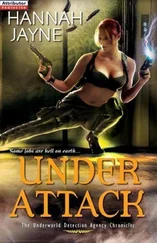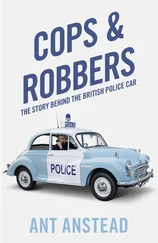Pile fully appreciated that ‘anti-aircraft guns take a little time to become effective after they have been moved to new positions. Telephone lines have to be laid, gun positions levelled, the warning system co-ordinated and so on.’ But as he lay in bed during those first nights of the blitz, when ‘despite the … very considerable increase in the number of guns by the second night of the battle, there did not seem to be much more anti-aircraft fire’, he became ‘both angry and frightened at the same time [much like the rest of the population of London] that our system was no good’. He lay awake ‘for the rest of the night thinking how to deal with this business’.
What Pile decided to do, though, had rather more to do with upping British morale than downing German planes. He gathered the senior AA officers together in the Signals Drill Hall in Brompton Road, and instructed them that ‘every gun was to fire every possible round. Fire was not to be withheld on any account. Guns were to go to the approximate bearing and elevation and fire. Searchlights were not to expose. R.A.F. fighters were not going to operate over London, and every unseen target must be engaged without waiting to identify the aircraft as hostile.’
The result, Pile found, was
as astonishing to me as it appears to have been to the citizens of London – and, apparently, to the enemy as well. For, although few of the bursts can have got anywhere near the target, the heights of aircraft steadily increased as the night went on, and many of them turned away before entering the artillery zone … It was in no sense a barrage, though I think by that name it will always be known.
Anyway, it bucked up people tremendously. The midnight news said some nice things about us, and when I put a call through to my wife the telephone operator said: ‘By God this is the stuff. All the girls here are hugging each other.’ Next day everyone said they had slept better, and for the first time A.A. Command hit the headlines. Apart from comforting the civilians, it stimulated the gunners, who had been feeling pretty frustrated during the long nights when they had been compelled to hear aircraft flying overhead and dropping their bombs without being engaged.
Although the barrage made sleep impossible in the crypt of the Archbishop of Canterbury’s official residence, Lambeth Palace, ‘with the noise continuing almost without intermission until 5.40 am’, those sheltering there were ‘much cheered by this offensive action’, which in the view of the Archbishop’s chaplain, the Reverend Alan Don, ‘had turned back many German planes and fewer bombs were dropped – at any rate in central London’.
The press was enthusiastic too. The Daily Herald wrote of ‘a curtain of exploding steel’, or ‘an effective patchwork quilt protecting the capital’, with ‘London really baring its teeth … Londoners sat up in their shelters and listened … “Spotters” on London roofs looked at one another and smiled. “That’s lovely music,” said one of them,’ while a nameless man taking shelter felt that it was ‘D—d heartening … it sounds like the answer to night bombing.’
Not everyone was pleased, of course. Spent shells falling back to the ground were hazardous, and ‘some angry voices were raised … in the southern and eastern suburbs, upon which the retreating Luftwaffe jettisoned their bombs’, while in another suburb the vibrations caused by the Ack-Ack guns were apparently cracking council-house lavatory pans, and ‘Would we mind very much moving the barrage elsewhere?’
‘The Blitzkrieg Spreads’, announced the press on 11 September: ‘Hitler’s murder squadrons make their most widespread attacks on the London area’. That was how it would be every night until fog and low cloud on 3 November made it impossible for the Luftwaffe to locate their targets, and for one night the capital was silent – no alert, no bombs, no Ack-Ack fire. Fifty-seven nights of continuous raids with no respite. ‘What a fantastic life we lead these days,’ wrote Phyllis Warner, a teacher who lived at the Mary Ward Settlement Centre in Bloomsbury, in the ‘Journal Under the Terror’ that she kept during the blitz and sent to the Washington Post to give the still neutral America some idea of the quotidian realities of wartime London. ‘Every night as the siren goes regularly at eight o’clock we scuttle down into the cellar, and are marooned there until six the next morning. My bedroom has never looked so invitingly comfortable as on these evenings when I hastily dive into a “siren suit” [an all-in-one outfit modelled on a workman’s boilersuit and much favoured by the rotund Winston Churchill] and retreat to the basement … And here we must spend every evening. Farewell to theatre, films, dances, dinner-parties and such pleasures; we pass our evenings in dugouts trying to read, write, talk or play bridge, so far as the rattle of planes and the crash of bombs will allow. Yet this part of the night is better than the long hours of darkness when we try to sleep through the horrors that surround us. This is the front line, this is the “Journey’s End” of this war, and men, women and children, we are trapped in it.’
In shelters much less congenial than the one at Mary Ward House – in domestic cellars, under the stairs, in damp Anderson shelters in back gardens, in public shelters in reinforced basements or on the surface, on tube platforms or in muddy trenches dug in parks or other open spaces, in a margarine warehouse, under bridges and arches – those who remained in London through necessity or choice sat out those long, dark, dangerous nights. By the end of September, the month of the supposed ‘knock-out blow’ that the Luftwaffe hoped to deliver to Britain, 5,730 people had been killed in the London region. In July the War Cabinet had taken the decision that it would be ill-advised to make casualty figures public, but once the blitz started it became clear that rumours often exaggerated the number of deaths and serious injuries, so stark notices were posted outside town halls giving the number of those killed and injured, but without identifying the location of the ‘incidents’, and insisting that the information ‘must not be published in the press’, lest it prove helpful to the Germans by informing them how successful their raids had been.
On some nights that September and October the raids were relatively light, with as few as seven bombers coming over (on 6 October). On others there were as many as 410 (on 15 October), but usually between two hundred and three hundred Heinkels, Dorniers and Junkers filled the sky. The main targets were still the City and the docks, but poor visibility, not entirely reliable navigational aids, and encounters with fighter planes, barrage balloons and searchlights (both of which forced the planes to fly higher) and Ack-Ack fire, meant that it was impossible to be certain of hitting a specific target, particularly by night. By early October Luftwaffe pilots were being issued with maps that indicated a target area – that is, a zone of several square miles within which several targets lay, such as the land within the U loop of the Thames – rather than a specific building or installation, such as Battersea Power Station or the West India Docks, as had previously been the case.
‘Indiscriminate bombings’ is how Churchill referred to the blitz, declaring that Hitler hoped, ‘by killing large numbers of civilians, and women and children, that he will terrorise and cow the people of this mighty Imperial city and make them a burden and anxiety for the Government and thus distract our attention unduly from the ferocious onslaught he is preparing’. But although the bombing did seem indiscriminate, and its intention might have seemed to be to kill and maim civilians, in fact its intention was to devastate the London docks so that the food and matériel essential to the prosecution of the war could not be imported, and to destroy government offices in central London from where the war was being directed.
Читать дальше












